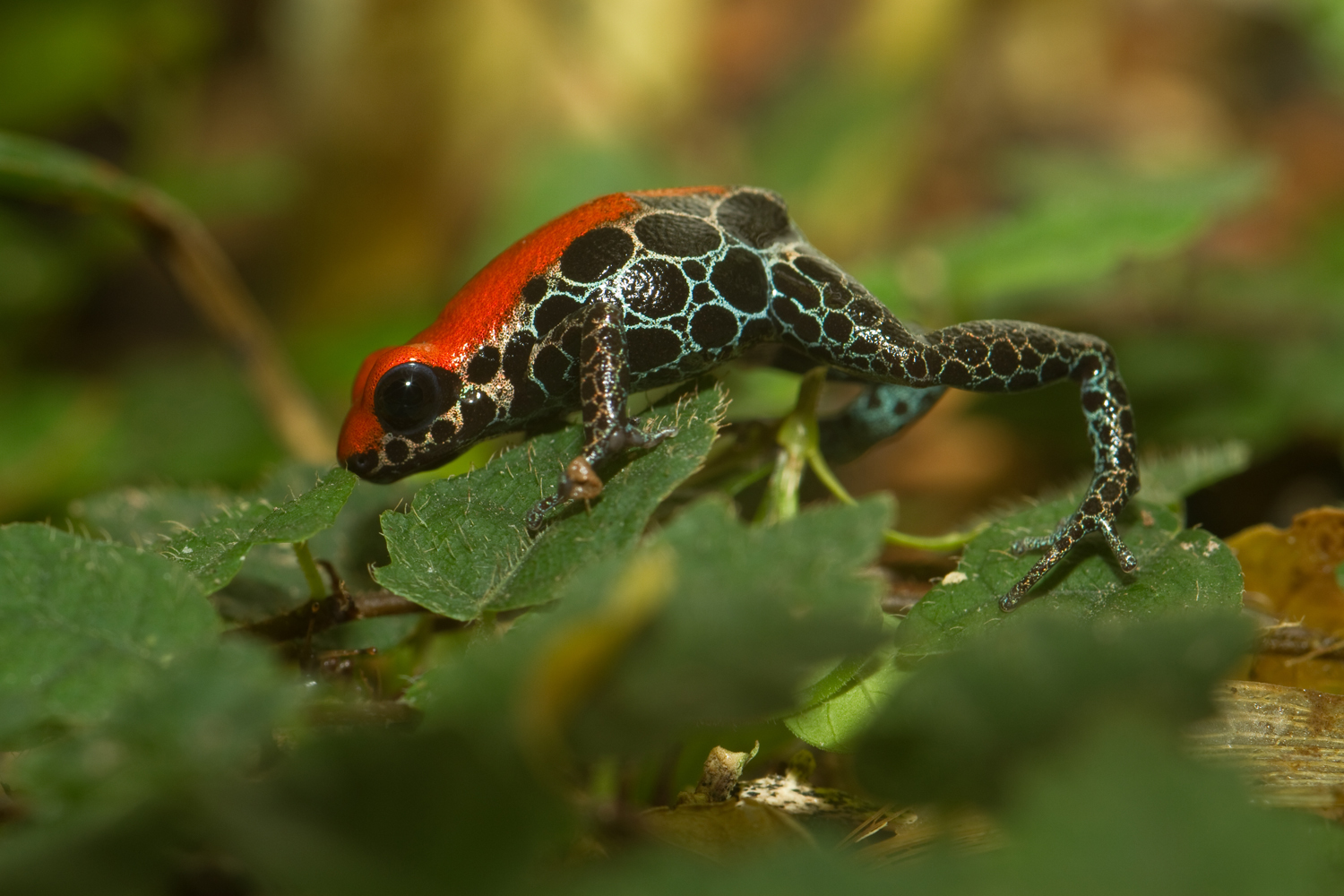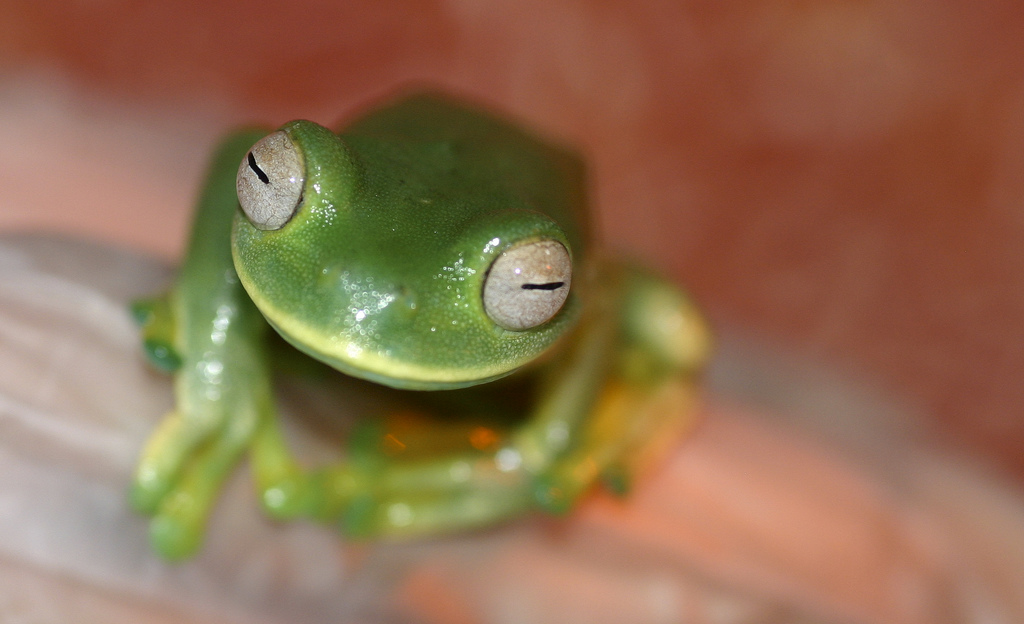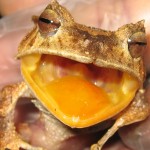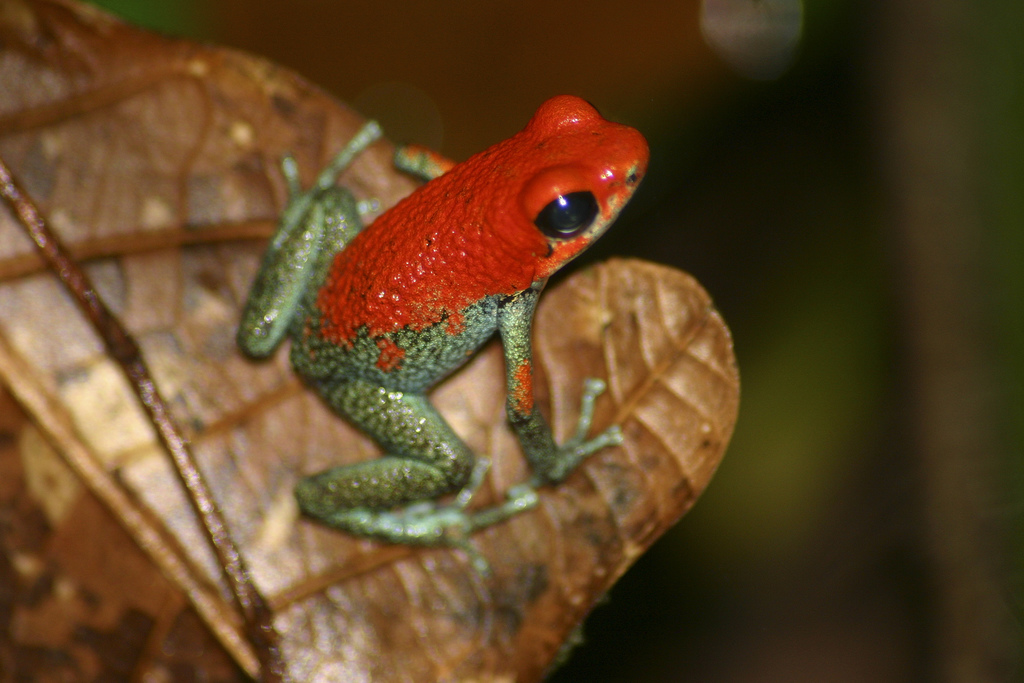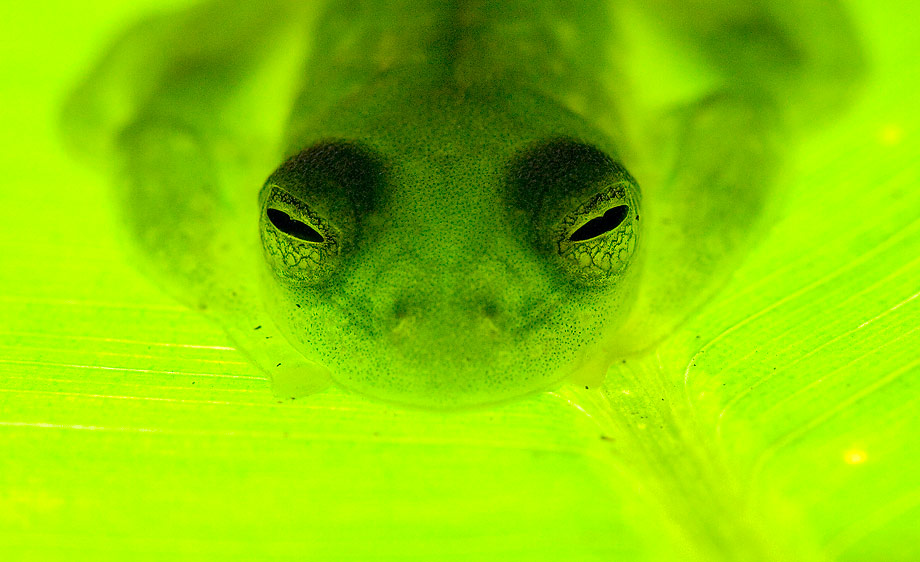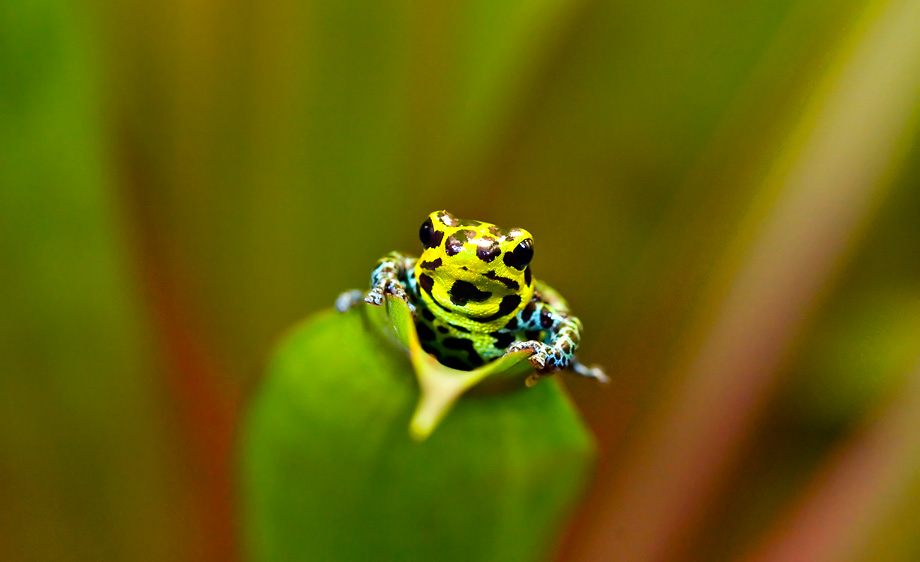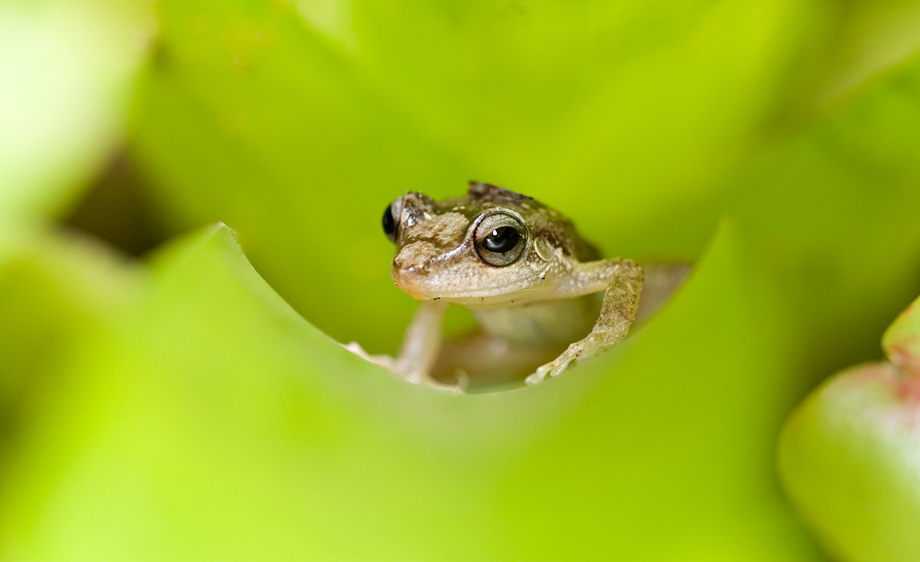Cute Frog of the Week: April 4, 2011
The cutie known as the red-backed poison dart frog can be found out and about during the day in the lowland tropical rainforests of Peru and Ecuador. Like all poison dart frogs, these beauties are vividly colored and patterned, which advertises their poison. Red-backed poison dart frogs have black legs with a cobalt or sky-blue mesh pattern, a black belly, and a back that ranges in color from fiery orange to scarlet in color, hence the name “red-backed.” While they are mostly terrestrial, meaning they tend to stay on the ground, these cuties also like to climb an occasional tree trunk (so does that make them an extra-terrestrial?). Luckily this frog is no alien and sightings are frequent. In fact, the International Union for the Conservation of Nature says these cuties are a widespread species with a stable population and large areas of suitable habitat remaining. It is also illegal to export these beautiful amphibians from their homes in Peru and Ecuador, which helps keep this special species safe from the pet trade.
Photo credit: Brian Gratwicke, Panama Amphibian Rescue and Conservation Project
Every week the Panama Amphibian Rescue and Conservation Project posts a new photo of a cute frog from anywhere in the world with an interesting, fun and unique story to tell. Be sure to check back every Monday for the latest addition.
Send us your own cute frogs by uploading your photos here: http://www.flickr.com/groups/cutefrogoftheweek/

